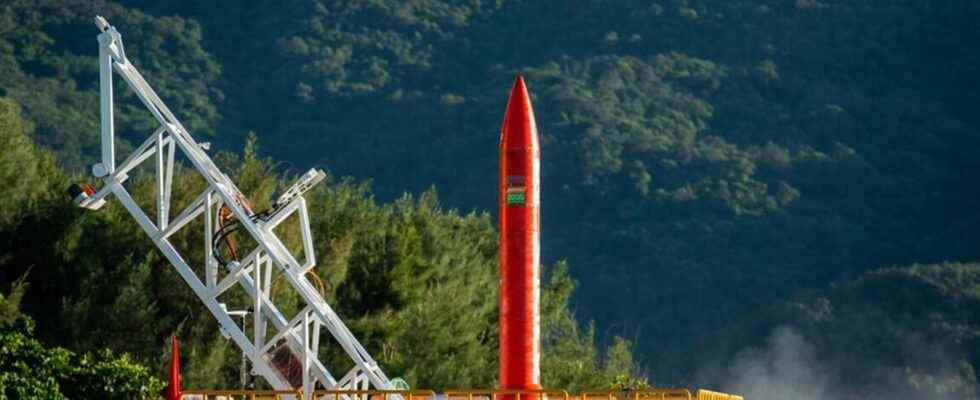What will be the next nation to be able to embark on the space adventure? The 12e space power in history could well be Taiwan, which has been testing rocket prototypes for more than ten years. The latest test carried out a few days ago involved a very rare technology: lithergol propulsion.
You will also be interested
[EN VIDÉO] Launch of the Chinese Space Station A long march 5 then carried from Wenchang in southeast China, the first Tianhe module to orbit.
It is from the county of Pingtung, in the south of Taiwan that a strange rocket last July 10. The craft ignited for 85 seconds to reach an altitude of 10 kilometers before deploying parachutes and be picked up by a ship with valuable flight data on board.
This rocket is the second stage of the project of launcher ARRC’s HTTP-3A orbital, theAdvanced Rocket Research Center. If the project comes to an end, it will make Taiwan the 12e spatial power of history, that is, the 12e nation capable of placing a charge in orbit by its own means. But this event is particularly interesting by the nature of the rocket itself, which uses the very rare “lithergol” propulsion technology.
7月10日,中国台湾省在首度启用的台湾屏东旭海火箭发射场测试飞行台湾首枚混合动力类卫星载具火箭HTTP-3A研发计划的第2节火箭。火箭10日上午6时12分点火升空,从发射到落海计时2分钟。 pic.twitter.com/RmqoJPYoh1
— Chen Rspyc (@chen_rspyc) July 10, 2022
Hybrid propulsion
All existing rockets use so-called liquid propulsion or solidfor example the combustion from kerosene liquid andoxygen liquid, like soyuz rocketor the combustion of a paste mixing both fuel and oxidizerlike the thrusters side ofAriadne 5. But it is possible to achieve a propulsion hybridusing both a propellant liquid and solid, this is lithergol propulsion.
We owe this technology to France, tested for the first time in 1964 with the LEX rocket, simply meaning Experimental Lithergol. Since then, lithergol has never gone beyond the test stage for space launchers. However, it is found on aerospace machines, such as rocket planes and in particular on the SpaceShipTwo of Virgin Galactic which should soon take its first tourists to admire the view at the space border.
To carry out the combustion, the liquid propellant flows through the block of solid propellant, which in particular makes it possible to regulate the combustion unlike conventional solid propulsion which can no longer be stopped once started. This technology allows a great simplicity of manufacture in the absence of a system of turbopumps which give all their complexity to conventional liquid propellant rocket engines.
Obviously, many disadvantages remain to be solved, the combustion is unstable and the thrust remains low. So let’s hope in the future that the Taiwanese engineers manage to give lithergol its letters of nobility!
What you must remember
- The ARRC, Taiwan’s public body in charge of developing rockets, tested the second stage of the HTTP-3A space launcher project, for a flight at an altitude of 10 kilometers.
- HTTP-3A is based on hybrid propulsion, known as lithergol, which mixes solid propellant and liquid propellant.
Interested in what you just read?
